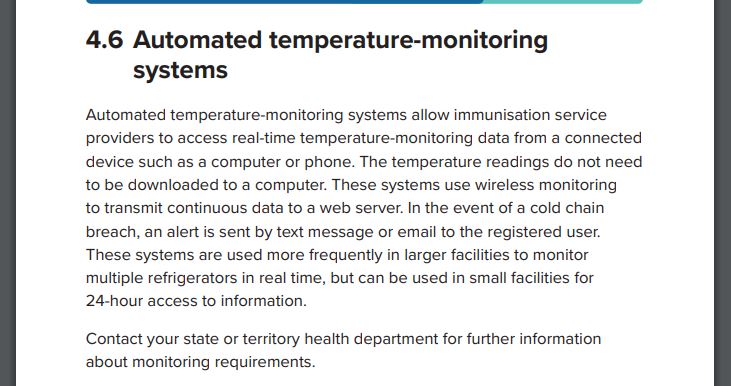Why Strive For Five needed replacing
The first edition of Strive For Five was released in 2005. It was intended to address a number of bad practices such as using bar fridges, as well as educate practitioners on better solutions such as vaccine fridges and temperature loggers.
The third edition of Strive For Five was released in 2019. In theory this was to bring it up to date with modern technology and changing practices within the medical industry.
Instead it was a minor rework that removed some things that were totally obsolete, but failed to address progress.
What was happening back in 2005
In 2005, the majority of pharmacies and doctors were storing vaccines in domestic fridges. This posed a number of problems:
- bar fridges often had a freezer compartment and this could freeze adjacent vaccines
- the temperature setting was either by a vague dial with a thickening bar on it, or just a series of numbers. It wasn’t clear which way it had to turn to make the fridge warmer or cooler
- it was easy to accidentally bump the setting and suddenly change it
- there was no temperature display in the fridge so staff had no idea what was happening
The Strive For Five revolution
There were 3 outcomes that Strive For Five was trying to ensure:
- Vaccines were stored at a safe temperature to ensure maximum shelf life
- If vaccines were not kept safely, they were not used on patient
- An audit trail existed to prove that vaccines were safely stored
What went wrong in 2019?
Even at its time of publishing, the third edition of Strive For Five acknowledged that it was no longer up to date:
Later on, it even goes into a bit more detail on the fastest emerging change in the industry – automated temperature monitoring systems:

Strive For Five failed to realise that technology tends to become more affordable with time, and by 2020 it was possible to by fully automated systems for the same price as many traditional loggers.
More importantly, it gave no guidance as to how this technology was to be used. Each state was left to come up with it’s own rules. Not the best idea when the original aim of Strive For Five was to have a national standard.
But what it really did was overlook a transformation
Back in 2005 when Strive For Five was written, the most unreliable entity was the fridge and the most reliable were the staff. Staff were expected to check the fridge twice a day and the reason was simple:
Except by 2019, if the fridge was too hot or cold then it would be already alerting the staff. By 2019 vaccine fridges were standard and most of the problems caused by domestic fridges had disappeared.
It was still possible for the fridge to fail and that is why an independent, cloud based temperature monitoring system is essential. It will immediately notify staff that there is a problem.
By the time the staff are manually checking the fridge at the end of the day they can assume that there has been no problem. In a number of sites the staff are actually the most unreliable part of the system and will manually back date readings that are missed. They are not impartial, and are often busy doing numerous urgent tasks.
Strive For Five failed to see that the order of reliability had reversed.
Strive For Five actually created an unnecessary burden
In some states the interpretation of Strive For Five meant that pharmacies of GPs were downloading the logs twice a day. What had previously been a 1 minute check twice a day turned into a five minute process. Even with cloud based systems staff were being asked to log in twice a day to check what was happening.
The problem with extra work is that it means that other tasks are rushed. Strive For Five was potentially causing staff to rush tasks as they were forced to do more.


